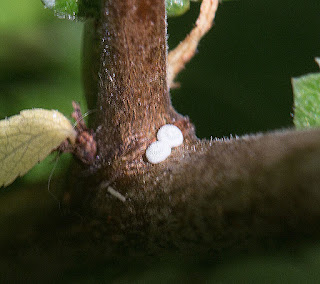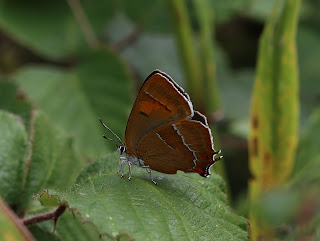It has been an interesting year for Brown Hairstreaks in Worcs with adult sightings generally down. In contrast to 2015, we have had very few reports of nectaring individuals even at favoured spots like the hemp agrimony along the rides at Grafton Wood. We presume honeydew in the canopy was more plentiful this year than last which may explain the difference. The real test, of course, of a Brown Hairstreak season is not the number of adults seen but the number of eggs laid. Our band of Thursday Streakers are yet to venture out with our first foray of the season not planned until 1st December when we shall be descending on Trench Wood near Droitwich. The real test, however, starts the following Saturday when we commence our annual egg count at Grafton Wood. This will be our 26th year of counting using the same methodology! You can find out more about the Brown Hairstreak and indeed other butterflies found around the West Midlands in the new 'Butterflies of the West Midlands' book published earlier this year. Copies can be ordered from the publishers at www.naturebureau.co.uk/bookshop or at events organised by West Midlands Butterfly Conservation. For further information about planned egg counts over the winter contact simonjprimrose@aol.com
















